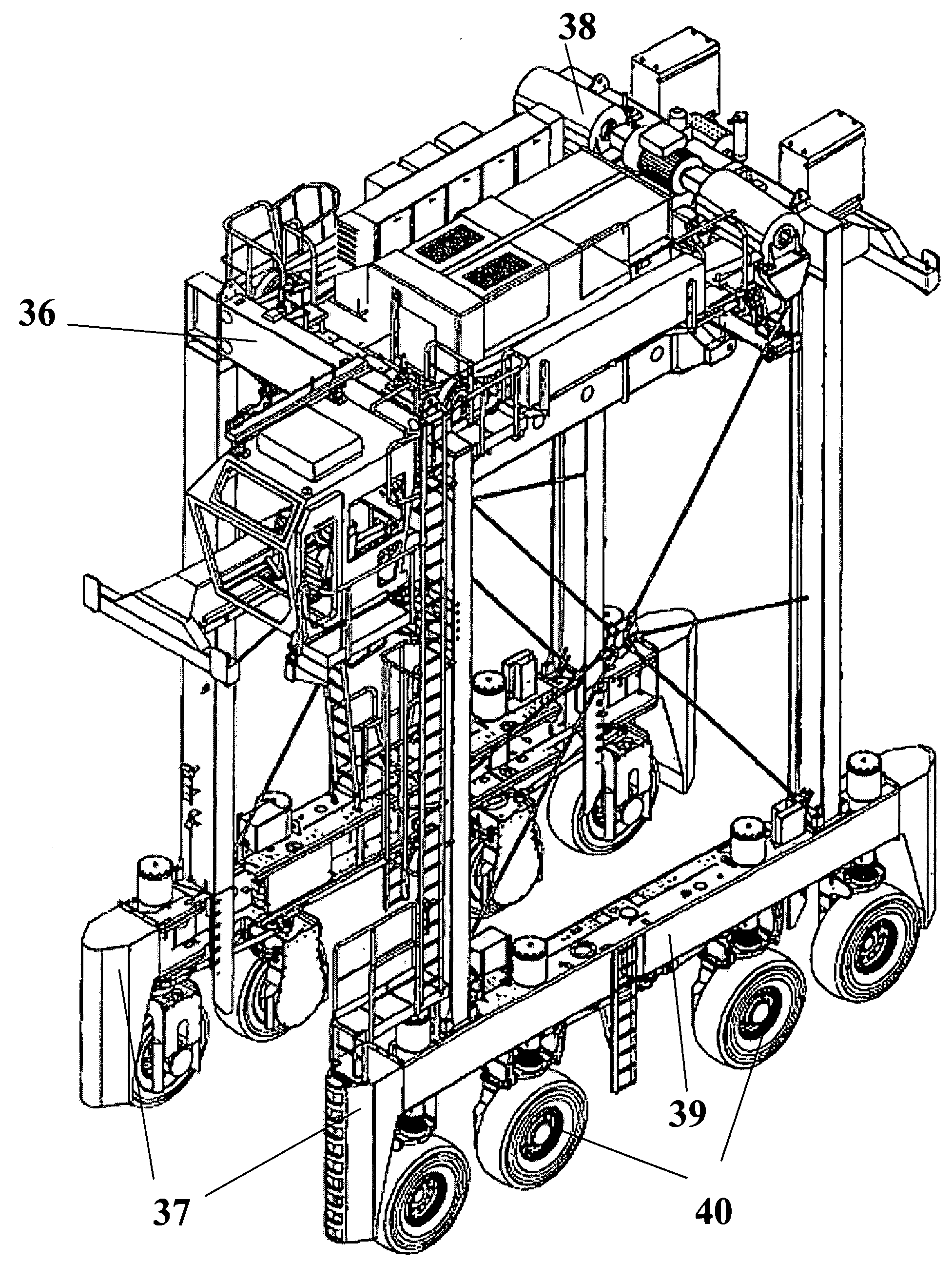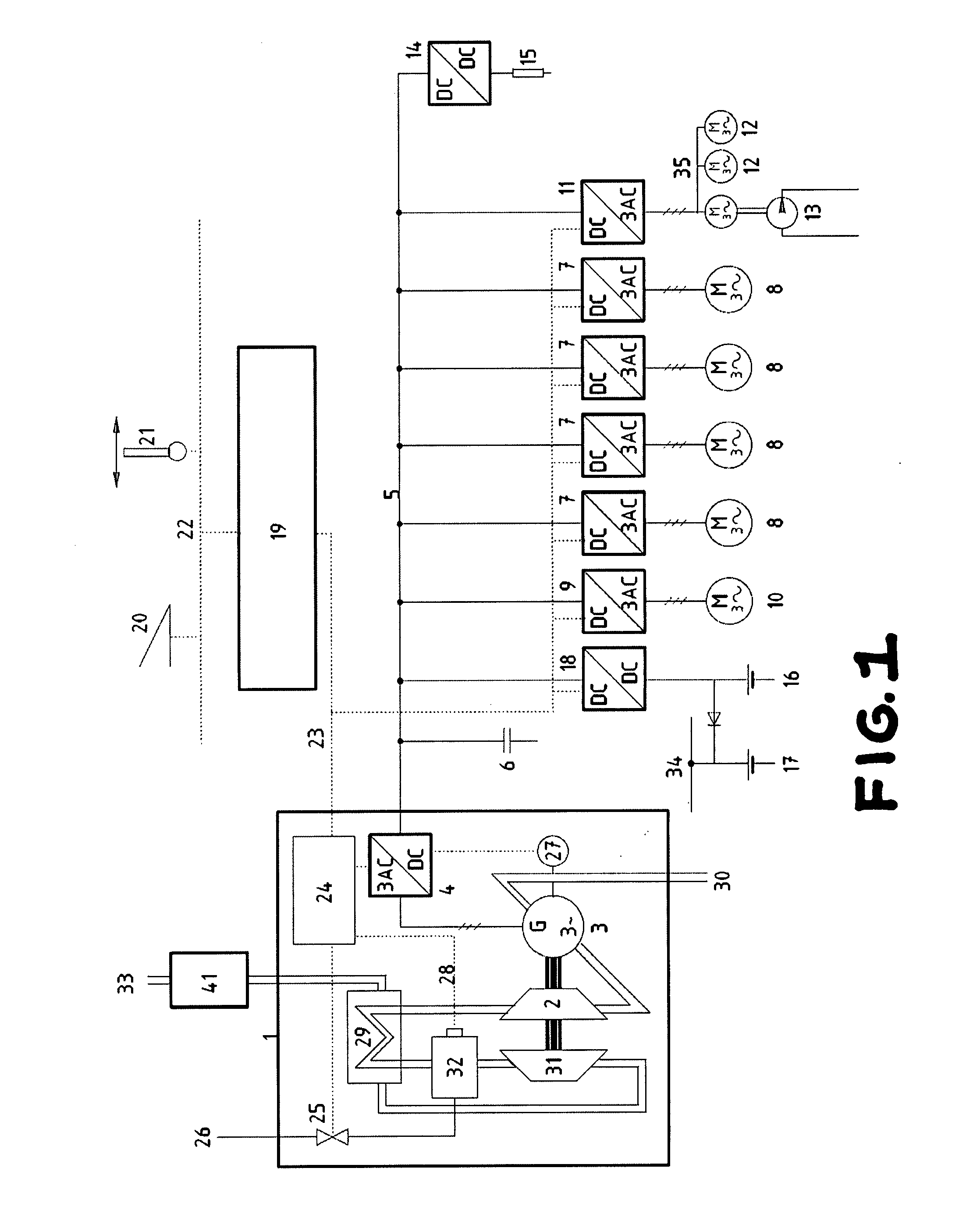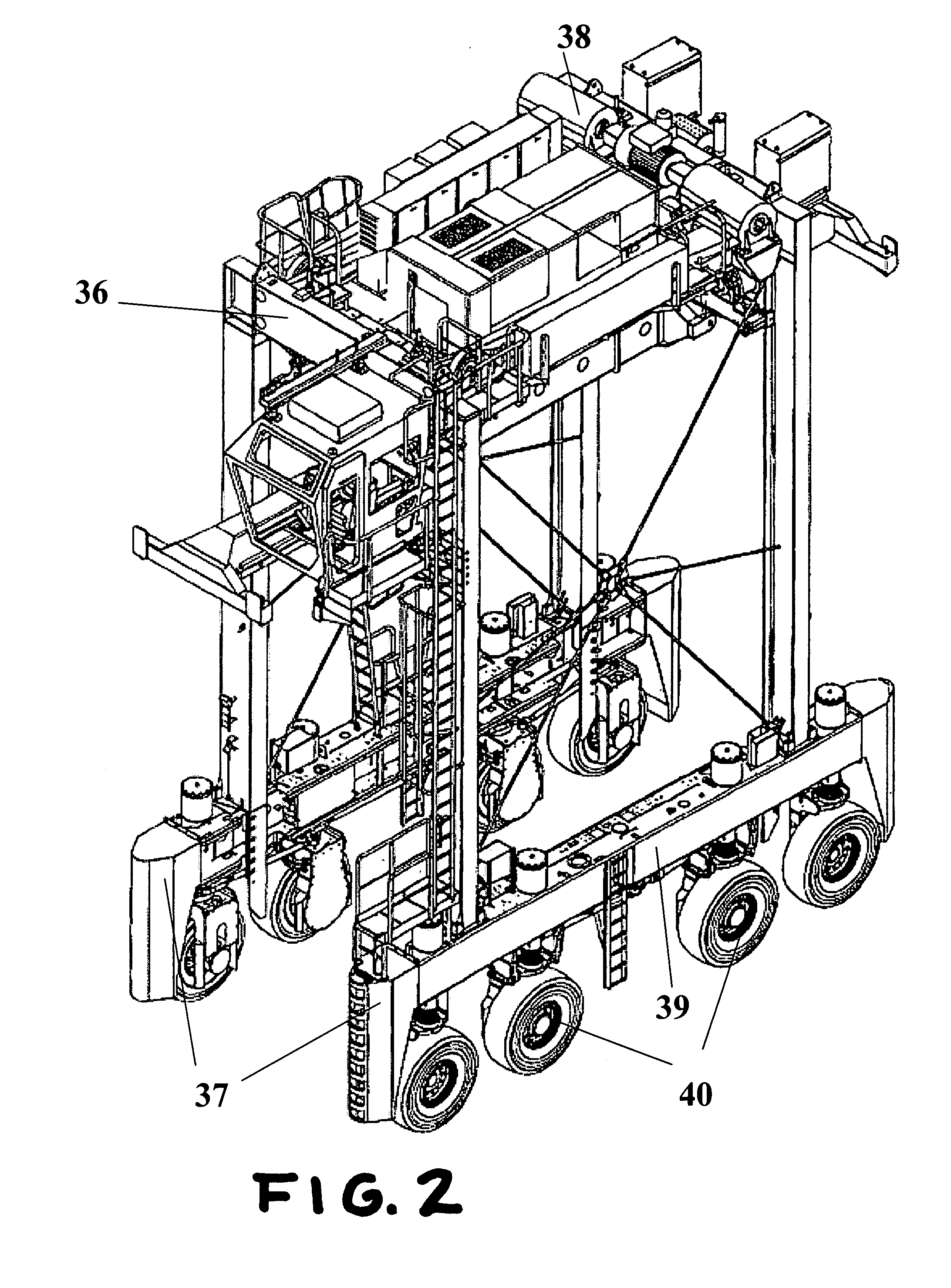[0018]It is therefore an object of the invention to eliminate the disadvantages of the known prior art, and to develop a straddle carrier that has a drive
system that makes do with clearly less maintenance and replacement, causes fewer harmful exhaust gases and
noise, is gentle on the sensitive
electronics because of its quiet, vibration-free operation, and keeps the expenditure for this within reasonable limits.
[0019]This task is accomplished by means of a straddle carrier having an electric drive system, consisting of a lower and an upper frame, which are connected with one another by means of supports. A lifting mechanism with hoists is disposed on the upper frame, and the lower frame consists of
chassis carriers having electrically driven wheels and a power generation unit that feeds its generated
electric power into a direct
voltage intermediate circuit, to which current inverters for supplying the travel, lifting, and auxiliary motors are connected. The power generation unit represents a
micro gas turbine having an attached power generator, the power of which is passed to the travel, lifting, and auxiliary motors, and a separate
regulator disposed on the
micro gas turbine, which regulates the
operating variables of power, speed of rotation, and temperature of the
turbine individually, together, or in combination, to achieve reference values that can be predetermined. There are current inverters that can be regulated disposed ahead of the
chassis, auxiliary, and lifting mechanism motors and an electronic
power management of the straddle carrier is disposed on the
regulator for the power generation unit, which control coordinates the power and
voltage of the power generation unit and drive motors with one another. Appropriate reference values are provided to the
regulator of the power generation unit and the current inverters of the drive motors, which can be regulated, by the
power management. The most different load demands of travel and lifting mechanism drives occur superimposed on one another. There is an electric
power storage unit disposed on a
bus bar of the intermediate circuit, directly or indirectly, which unit evens out load variations and saves braking and lowering power.
[0023]Such regulation is possible in that the speed of rotation and the
inlet temperature of the
turbine are detected by way of sensors and passed to an electronic control device, the
microprocessor, which then controls a fuel regulation valve in order to keep the
turbine in a narrow optimal speed of rotation and temperature range by means of setting the amount of fuel. In this connection, the same electric power always has to be taken off from the turbine generator, as well, and for this purpose, the regulation system controls
power electronics, e.g. an IGBT current
inverter. A
power storage unit such as a rechargeable battery must therefore balance out the load variations of the electric power given off for consumption, as compared with the constantly produced turbine power.
[0024]A further development of this regulation system consists in no longer keeping the generated turbine power constant, but rather regulating it to the required load when load variations occur, by means of adjusting the speed of rotation, whereby nevertheless, the optimal turbine
inlet temperature is maintained. This has the
advantage that even in partial load operation, only slight losses in the degree of effectiveness occur. A
power storage unit, e.g. a buffer battery, takes over the electric load difference only part of the time, if load variations occur, until the turbine power has been adjusted. If the required turbine power is to be increased by increasing the speed of rotation, for instance, the regulator temporarily decreases the electric
power output of the generator by controlling a current
inverter, in other words relieves the stress on the turbine, so that it can run up to the new speed of rotation at a constant temperature, and in turn increases the
power output of the buffer battery, until the new speed of rotation and power have been reached. Then, the entire power needed is taken from the generator once again.
[0025]From this, it is evident that such a micro turbine
power unit can only function in a
usable manner together with the installed
power electronics, a digital regulation system, and a storage battery. Without these
electronics, the generator current that is generated, which has a frequency of over 1600
Hertz, could not supply any of the usual consumers, and the turbine could not be regulated in stable manner. Only power and regulation electronics, together with the battery, make it possible not to stall the turbine in case of load variations of the electric power that is taken off, or to accelerate it to dangerously high speeds of rotation.
[0030]Finally, it is advantageous to supply the auxiliary drives, such as hydraulic pumps for steering, brakes, and spreader, the
alternator for charging the batteries and supplying the on-board network, for example a 24V DC network, and the
air conditioning of the driver's cabin, which were previously driven directly and mechanically by a
diesel engine, with power from the micro turbine.
 Login to View More
Login to View More  Login to View More
Login to View More 


